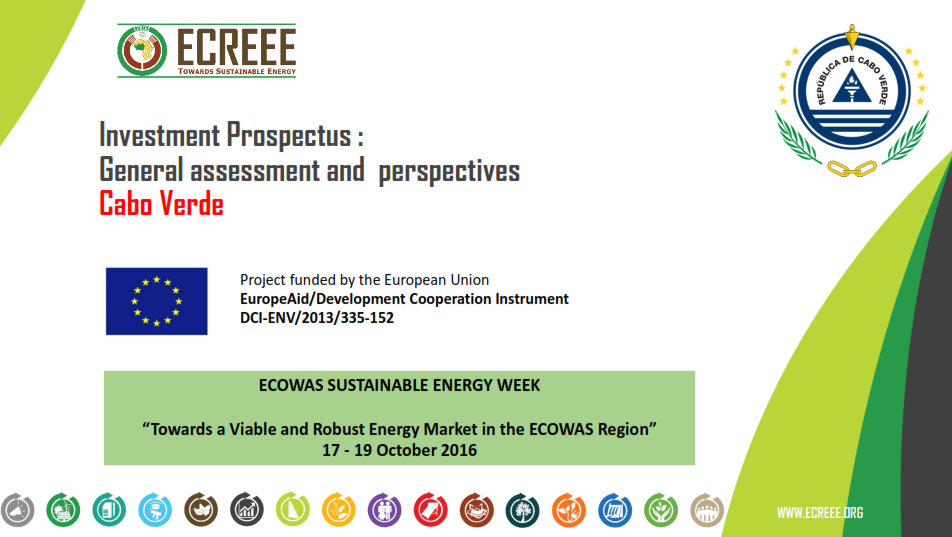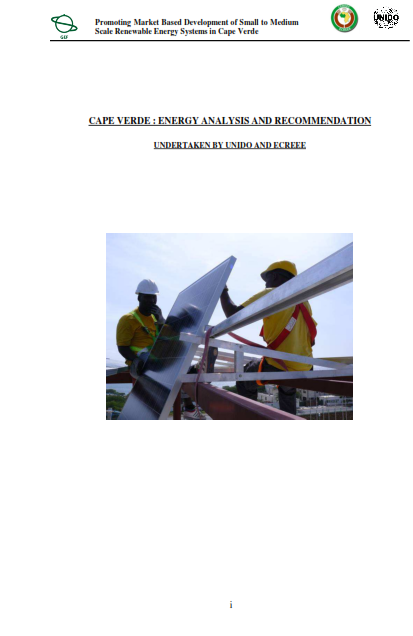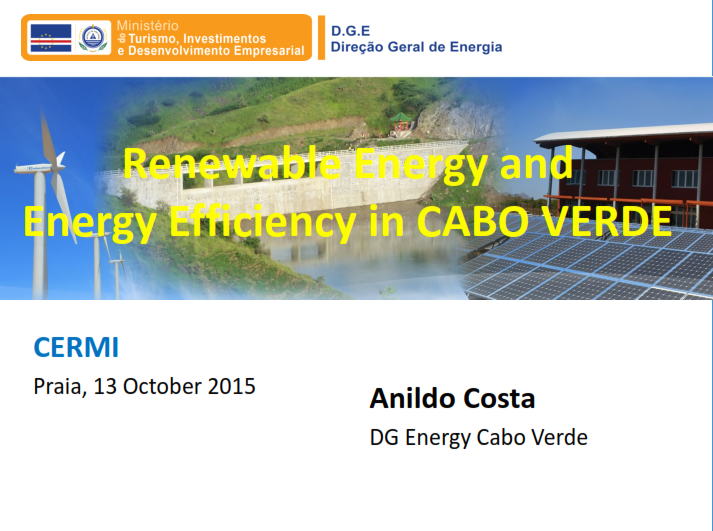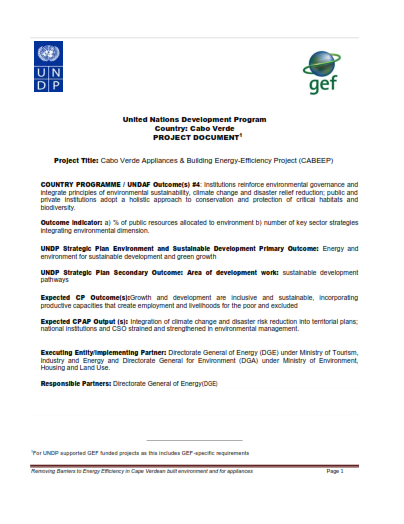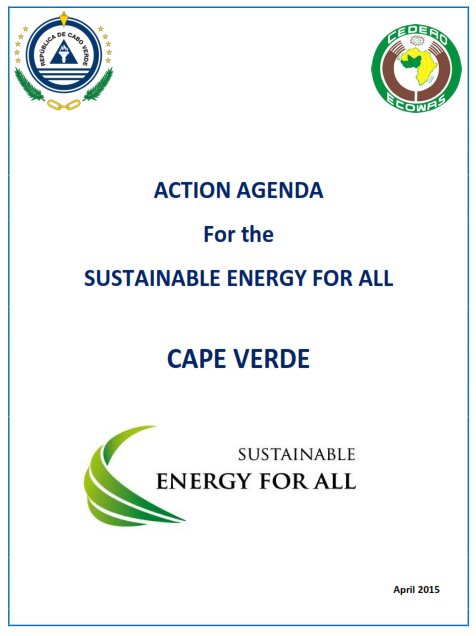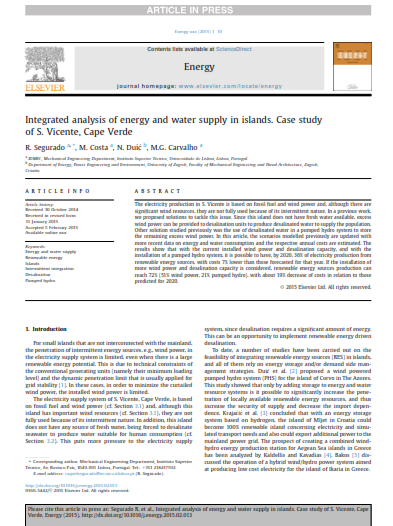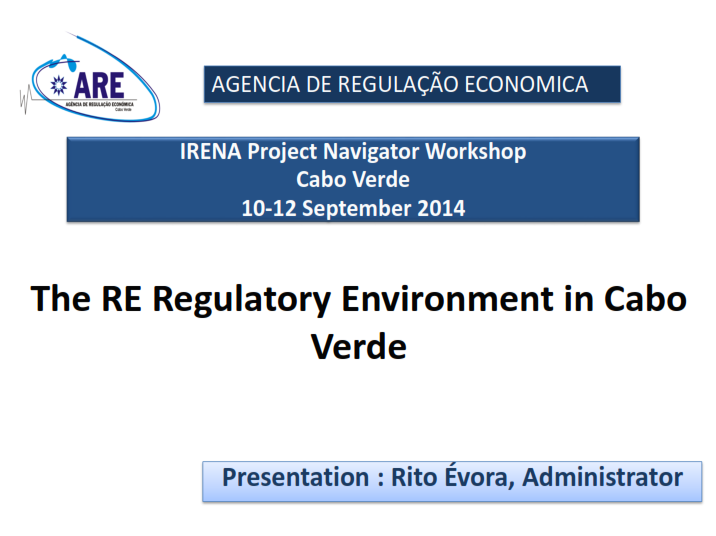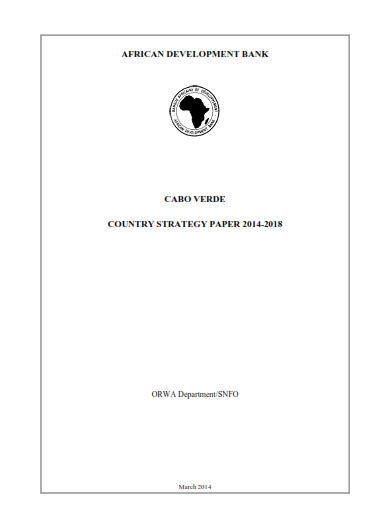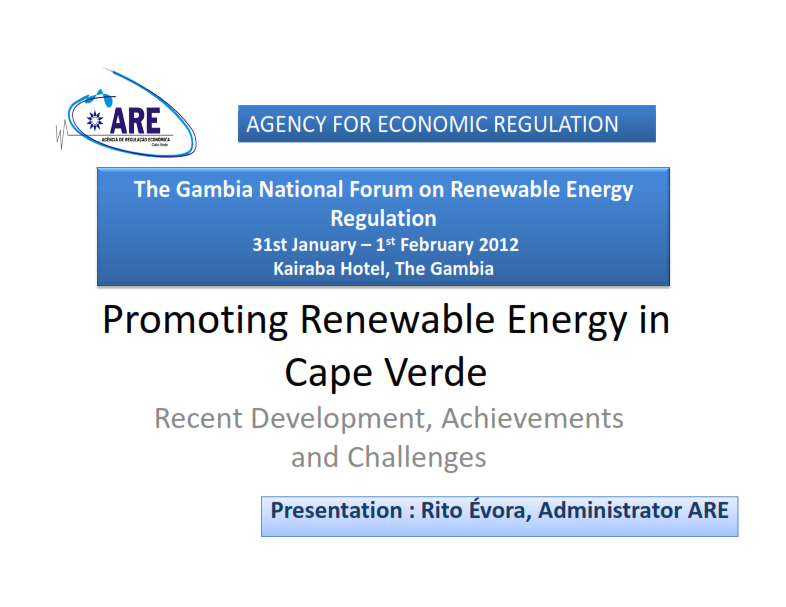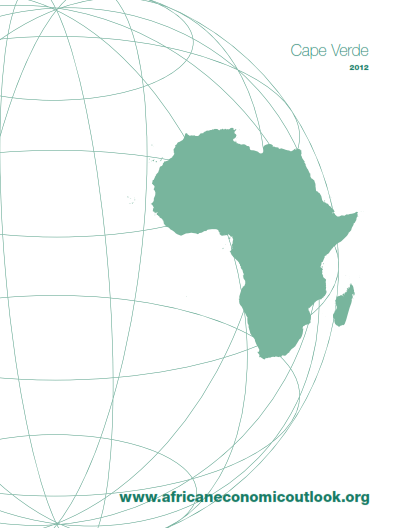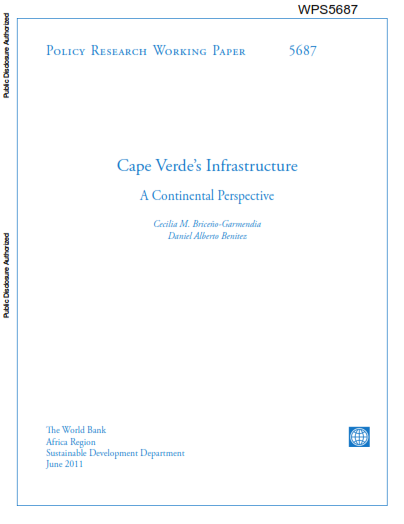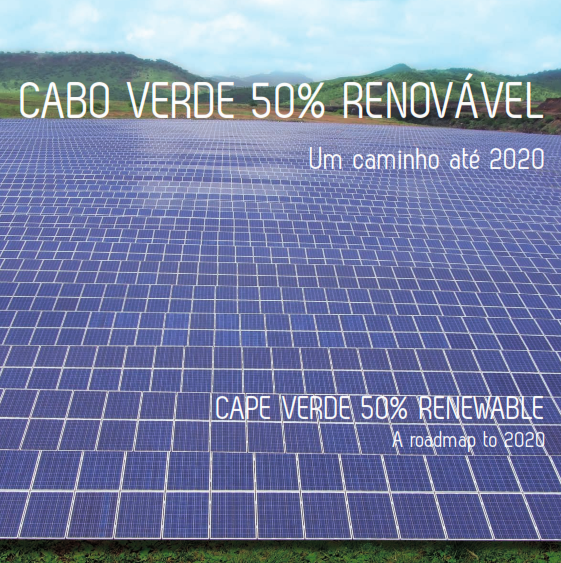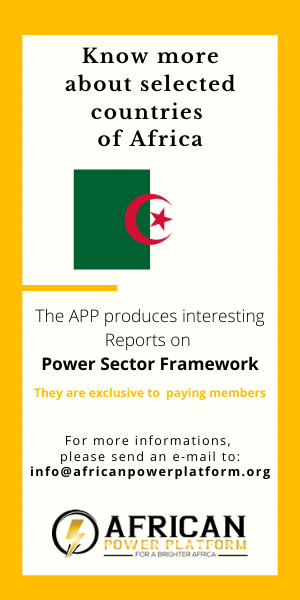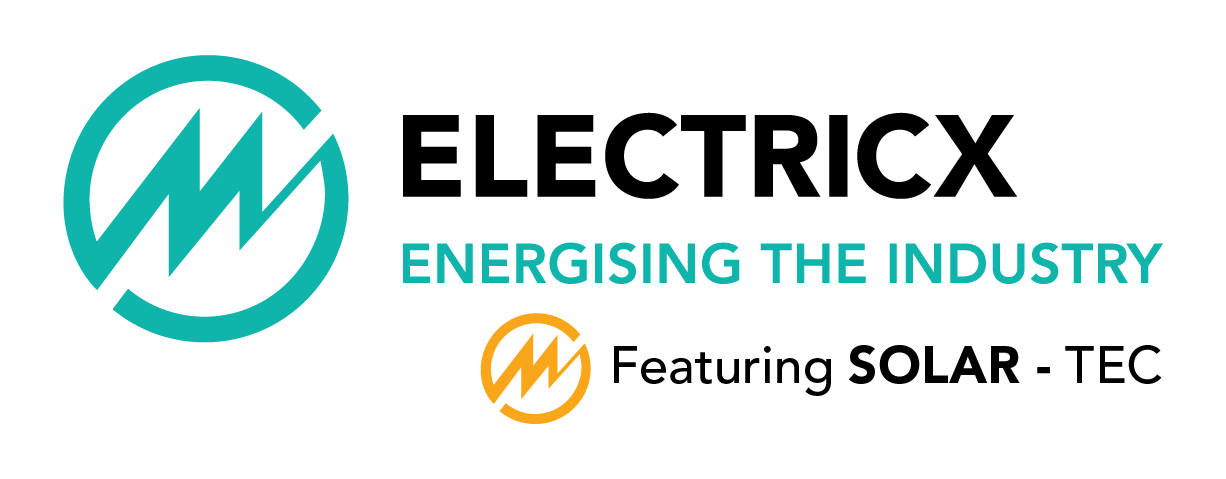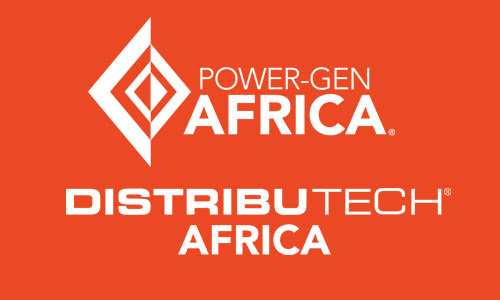We post here the relevant reports for the power sector in Cape Verde. Feel free to join our efforts and share us any other you may have found. We'd be glad to add them to the list. Just send an email to This email address is being protected from spambots. You need JavaScript enabled to view it.
Publication date: 2017, July
Author: JICA
Description: Content:
- General Information;
- Energy Reserves;
- Current Energy Policy and Measures;
- Past Energy Demand and Supply;
- Outlook of Energy Demand and Supply (2020, 2030);
- Energy Related Investment;
- Major Difficulties and Bottlenecks in Formulating Energy Policies;
- Subjects of Interest.
Download Report >>
Publication date: 2017
Author: Aalborg University
Description: In this study, a both environmentally and economically sustainable option is proposed and the synergies between the actors in the area are analysed in order to determine the possible options that could be aligned with the ambitious renewable energy transition the country proposed until 2030.
Download Report >>
Visit Website >>
Publication date: 2016, October
Author: ECREEE
Description: Energy policy:
- Government energy strategy (2008);
- The strategic plan for renewable energy PESER was approved by resolution of the council of Ministers No. 7/2012 on December 9;
- NREAP, NEEAP and SE4ALL AA (2015).
Download Report >>
Publication date: 2016, May
Author: DGE
Description: Luxembourg has a along history of successful Development Cooperation with Cabo Verde (partner country since 1993). The 3rd ICP (Indicative Cooperation Program) between the 2 countries, which initiated in 2011, placed particular attention in competence development to serve for RE and EE sector with construction of CERMI. The support to RE sector development in Cabo Verde came with the 4th ICP, where Renewable Energy is the 3rd axis of intervention.
Download Report >>
Publication date: 2016
Author: UNIDO / ECREEE
Description: The Cape Verde’s energy supplies come from four main sources – petroleum products, butane gas, firewood and wind. The use of firewood for cooking especially in the rural areas is deeming to be fuelling the evident deforestation in the country, being the most affected the islands that are traditionally more rural (S. Antão, S. Vicente, S. Nicolau, Santiago, Fogo e Brava).
Download Report >>
Publication date: 2015, October
Author: DGE
Description: Renewable Energy and Energy Efficiency in CABO VERDE
Download Report >>
Publication date: 2015, October
Author: ECREEE / UNICV
Description: The islands of Cape Verde have excellent renewable energy potentials. The average solar radiation is estimated to be 5.71 kWh/m2/day and average wind speed topples 7 m/s in innumerous sites around the archipelago, however, the country is plagued with scarce water resource due to little and erratic rain fall for many years now, thus, desalination stands out as the viable and handy alternative for the water supply to the population.
Download Report >>
Publication date: 2015, July
Author: UNDP / GEF
Description: Cabo Verde is a small island country located in the Atlantic Ocean, approximately 570 kilometres off the coast of West Africa.
Download Report >>
Publication date: 2015, April
Author: SE4ALL
Description: The sustainable energy initiative for all (the SE4ALL acronym in English of Sustainable Energy for All) is a partnership between Governments, the private sector and civil society.
Download Report >>
Publication date: 2015, February
Author: ELSEVIER
Description: The electricity production in S. Vicente is based on fossil fuel and wind power and, although there are significant wind resources, they are not fully used because of its intermittent nature.
Download Report >>
Publication date: 2014, September
Author: ARE
Description: Content:
- Introduction & Recent Developments;
- The Cape Verde’s Legal and Regulatory Framework for Renewable Energy Promotion;
- Risks and Barriers to Overcome.
Download Report >>
Publication date: 2014, March
Author: AfDB
Description: This report aims to propose a Bank Group strategy for Cabo Verde, a Middle-Income Country (MIC) and also a Small Island Developing State (SIDS), for the period 2014-2018. Cabo Verde’s successful socio-economic development during the last decade is widely recognized.
Download Report >>
Publication date: 2013, December
Author: UPC
Description: Even though Cape Verde has high wind and solar energy resources, the conventional strategy for increasing access to electricity in isolated rural areas is by centralized microgrids with diesel generators. In this study, the design of 2 off-grid electrification projects based on hybrid windphotovoltaic systems in Cape Verde is developed and analyzed.
Download Report >>
Visit Website >>
Publication date: 2013, October
Author: Abraao Lopes
Description: Cape Verde’s progress in socioeconomic development is widely recognized:
- Signed a special partnership agreement with the European Union in November 2007;
- Acceded to the World Trade Organization in December 2007;
- Graduated from the list of Least Developed Countries in January 2008.
Download Report >>
Publication date: 2012, February
Author: ARE
Description: Content:
- Brief Country Overview;
- Recent Developments;
- Cape Verde’s New Legal and Regulatory Framework for Renewable Energy Promotion;
- The Road Map to 2020.
Download Report >>
Publication date: 2012
Author: AfDB
Description: Cape Verde, a small island state, is a lower middle-income country (MIC) under the African Development Bank’s (AfDB) credit policy.
Download Report >>
Publication date: 2011, July
Author: AfDB
Description: The project will concern 492 000 inhabitants (or 94% of the total population) of Cape Verde living on six of its islands. It will contribute to increasing the overall rate of access to electricity from 88% in 2010 to 98% by 2018, and will also facilitate the electrification of some fifty localities in rural areas. The project’s direct beneficiaries will be the households, craftsmen, businesses, government services and SMEs/SMIs of the six islands.
Download Report >>
Publication date: 2011, June
Author: WB
Description: Cape Verde stands out in West Africa as a country whose economic geography poses major and unique challenges for infrastructure development. Its small population of half a million people is spread across a nine-island archipelago. The islands need complementary infrastructure in terms of roads, water, transport, ports, power, and ICT.
Download Report >>
Visit Website >>
Publication date: 2011
Author: ECREEE
Description: Cape Verde has very limited natural resources and suffers from poor rainfall and limited fresh water. Only 4 of the 10 main islands (Santiago, Santo Antão, Fogo, and Brava) can support agricultural production, and over 90% of all food consumed in Cape Verde is imported while most of the water used in the country comes from desalination plants on the islands. Mineral resources include salt and pozzolana (a volcanic rock used in cement production).
Download Report >>
Publication date: 2011
Author: MTIE
Description: Studies have confirmed the prospect of achieving 50% penetration of Renewable Energy in electricity production until 2020 in a both technical and economical feasible approach, as long as a set of requirements is complied in terms of financing and infrastructures development.
Download Report >>







